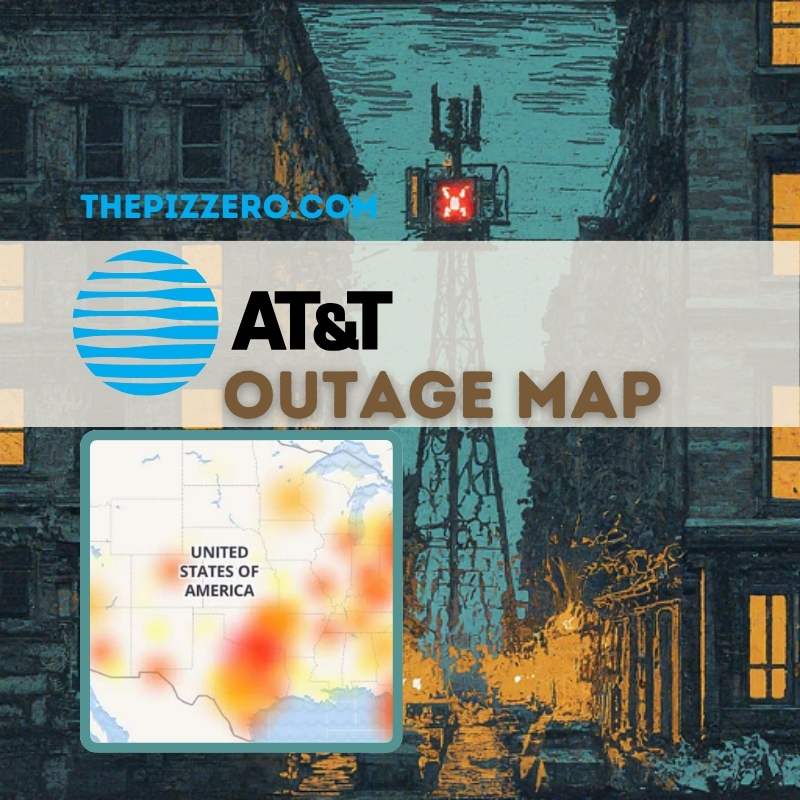AT&T Outage Map: Ultimate Guide to Staying Connected In 2024

at&t outage map
Table Of Contents
What is an AT&T Outage Map?
An AT&T outage map is a visual tool that displays areas currently experiencing service disruptions across the AT&T network. These maps are invaluable resources to quickly determine if a problem with your cell service, internet connection, landline phone, or U-verse TV is due to a localized issue or a larger AT&T outage.
How they work
AT&T outage maps typically use a color-coded system to indicate the severity and scope of outages. They gather data from several sources, including direct customer reports, network monitoring systems, and even social media chatter to paint a real-time picture of service disruptions.
Why they’re important
- Confirm an issue: Outage maps help you verify that you’re not the only one experiencing a problem, eliminating the need for unnecessary troubleshooting on your end.
- Estimated restoration times: Some outage maps provide estimated times for service restoration, helping you plan accordingly.
- Manage expectations: Understanding the extent of an outage prepares you for potential delays in getting support or service back online.
Types of AT&T Outages
AT&T outage maps can track various service disruptions, including:
- Wireless (cellular network): These outages affect your ability to make calls, send texts, or use mobile data on your AT&T cell phone.
- Internet (DSL, Fiber): Internet outages disrupt your home or business connection provided by AT&T, whether through DSL or fiber-optic lines.
- Landline phone: Landline outages mean you can’t make or receive calls on your traditional AT&T home phone.
- U-verse TV: These outages impact your AT&T U-verse television service, leading to signal loss or streaming problems.
How to Find AT&T Outages in Your Area
Finding out if an AT&T service disruption is the root cause of your connectivity problems is essential. Here are the best resources to track and pinpoint AT&T outages:
Official AT&T Outage Resources
- AT&T Outage Website (https://www.att.com/outages/): This is your primary source for the most accurate and up-to-date information on AT&T outages. To check for problems:
- Enter your full address for location-specific outage information.
- Sign in to your AT&T account to see outages directly impacting your services.
- Subscribe to text alerts for updates on restoration efforts.
- AT&T Smart Home Manager App: This app provides a convenient way to manage your AT&T Wi-Fi network and includes handy troubleshooting features. It often displays outage alerts relevant to your location.
Third-Party Outage Trackers
- Downdetector (https://downdetector.com/status/att/map/): Downdetector is a popular crowd-sourced outage tracker. It offers:
- A real-time AT&T outage heatmap for a visual representation of problem areas.
- User-submitted reports that can provide additional context or early warnings of emerging outages.
Troubleshooting AT&T Outages
Experiencing an AT&T outage can be frustrating. Before taking further action, there are a few crucial steps you can take to narrow down the issue and potentially resolve it without needing to report it.
Before You Report an Outage
- Check your device connections:
- Wireless: Ensure airplane mode is off, and there’s good cellular signal.
- Wired Connections: Make sure all cables are securely plugged into your modem/router and devices.
- Restart your modem/router:
- Unplug your modem/router for 30 seconds, then plug it back in. Allow a few minutes for it to fully reboot. This often fixes temporary glitches.
- Check for scheduled maintenance in your area (via AT&T website): AT&T occasionally performs planned maintenance that might temporarily affect service. Check the outage website and look for any announcements.
How to Report an AT&T Outage
If the problem persists after basic troubleshooting, it’s time to report it to AT&T:
- AT&T support phone numbers:
- Find the relevant contact numbers for your specific AT&T services on their website (https://www.att.com/contactus/).
- AT&T support website:
- Use AT&T’s online chat or support forms to report the issue and get assistance.
Getting Updates During an Outage
- Sign up for text alerts (AT&T website): The AT&T outage website lets you sign up to receive text messages about outages impacting your services, including updates on estimated restoration times.
- Monitor AT&T social media accounts: AT&T often posts updates about significant outages on their social media channels like Twitter and Facebook.
Staying Connected During AT&T Outages
Alternative Internet Options
During an AT&T outage, don’t let your online work or communication grind to a halt. Here’s where to seek alternative internet connections:
- Public Wi-Fi Hotspots: Coffee shops, restaurants, and libraries are often excellent places to find free public Wi-Fi. These businesses typically welcome customers to linger and use their internet access. Airports and transportation hubs also are more likely to have Wi-Fi, though it may not always be free.
- Mobile Hotspot (if your cellular data is unaffected): If your AT&T wireless service is still functioning, you have a powerful tool right in your pocket. Most smartphones can be turned into mobile hotspots, allowing you to share your cellular data connection with laptops, tablets, or other devices. Just remember to be aware of your data limits to avoid unexpected charges.
- Places with Free Wi-Fi: Community centers, some hotels (even if you aren’t staying there), and even parks or public spaces might offer free Wi-Fi access. A bit of research about your local area can pay off when an outage strikes.
Protecting Your Devices
- Surge Protectors: The same weather events or accidents that cause AT&T outages can create power fluctuations. Surge protectors are essential to shield your computers, TVs, and other sensitive electronics from damage caused by voltage spikes. Having reliable surge protectors in place is a simple but effective way to ensure your devices remain safe.
- Importance of Data Backup: AT&T outages remind us why regular data backups are crucial. Cloud storage services offer a convenient way to automatically back up important files from your computers and mobile devices. For extra security, an external hard drive provides another layer of local data backup. Don’t wait for an outage to strike – make data protection a regular habit.
Frequently Asked Questions (FAQ) about AT&T Outages
Q. How long do AT&T outages typically last?
A. Unfortunately, there’s no one-size-fits-all answer to how long an AT&T outage might last. The duration can vary greatly depending on these factors:
- Severity: Small localized outages might be fixed within hours, while widespread outages caused by major events (like severe storms) could take days to fully resolve.
- Location: Urban areas might see faster restoration times due to crew availability, while rural locations could experience longer delays.
- Complexity: Equipment malfunctions may be quick to repair, whereas damaged infrastructure requires more extensive work.
Tip: Check the AT&T outage map or contact support for estimated restoration times specific to your situation.
Q. Can I get compensation for an AT&T outage?
A. AT&T may offer credits or refunds for prolonged service outages in some cases. However, this isn’t guaranteed and often depends on factors like:
- Length of the outage: Generally, extended outages have a higher chance of qualifying for compensation.
- Your Service Agreement: Review your contract with AT&T for any specific terms related to outages.
- State Regulations: Some states have laws regarding compensation for utility disruptions.
Tip: If you’ve experienced a significant outage, contact AT&T customer service to inquire about potential compensation.
Q. What causes AT&T outages? (Weather, equipment failure, etc.)
A. AT&T outages can stem from various causes, including:
- Weather: Severe storms, hurricanes, heavy rain, lightning, and extreme temperatures can damage critical network infrastructure.
- Equipment failure: Technical malfunctions with network hardware or software issues can disrupt service.
- Accidental Damage: Construction work, traffic accidents, or other events can physically damage fiber lines or cell towers.
- Planned Maintenance: Sometimes, AT&T needs to perform scheduled maintenance that temporarily affects service availability.
- Network Congestion: Occasionally, high network traffic in a specific area can cause temporary slowdowns or spotty service.
Call to Action
We all know how frustrating AT&T outages can be! Have you experienced a recent service disruption? Whether it was a minor annoyance or a major inconvenience, share your story in the comments below.
- How did you stay connected during the outage?
- Did you find any of the outage tracking resources particularly helpful?
- What tips or tricks would you recommend to others?
Your insights can help others in our community be better prepared for the next outage. Plus, sharing experiences can let AT&T know the real impact these outages have on their customers.
Don’t Get Caught Off Guard Again
Bookmark the following resources to be ready next time an AT&T outage strikes:
- AT&T Outage Website: https://www.att.com/outages/
- Downdetector’s AT&T Outage Map: https://downdetector.com/status/att/map/
By staying informed and having a backup plan, you can minimize the disruption caused by an AT&T outage.






